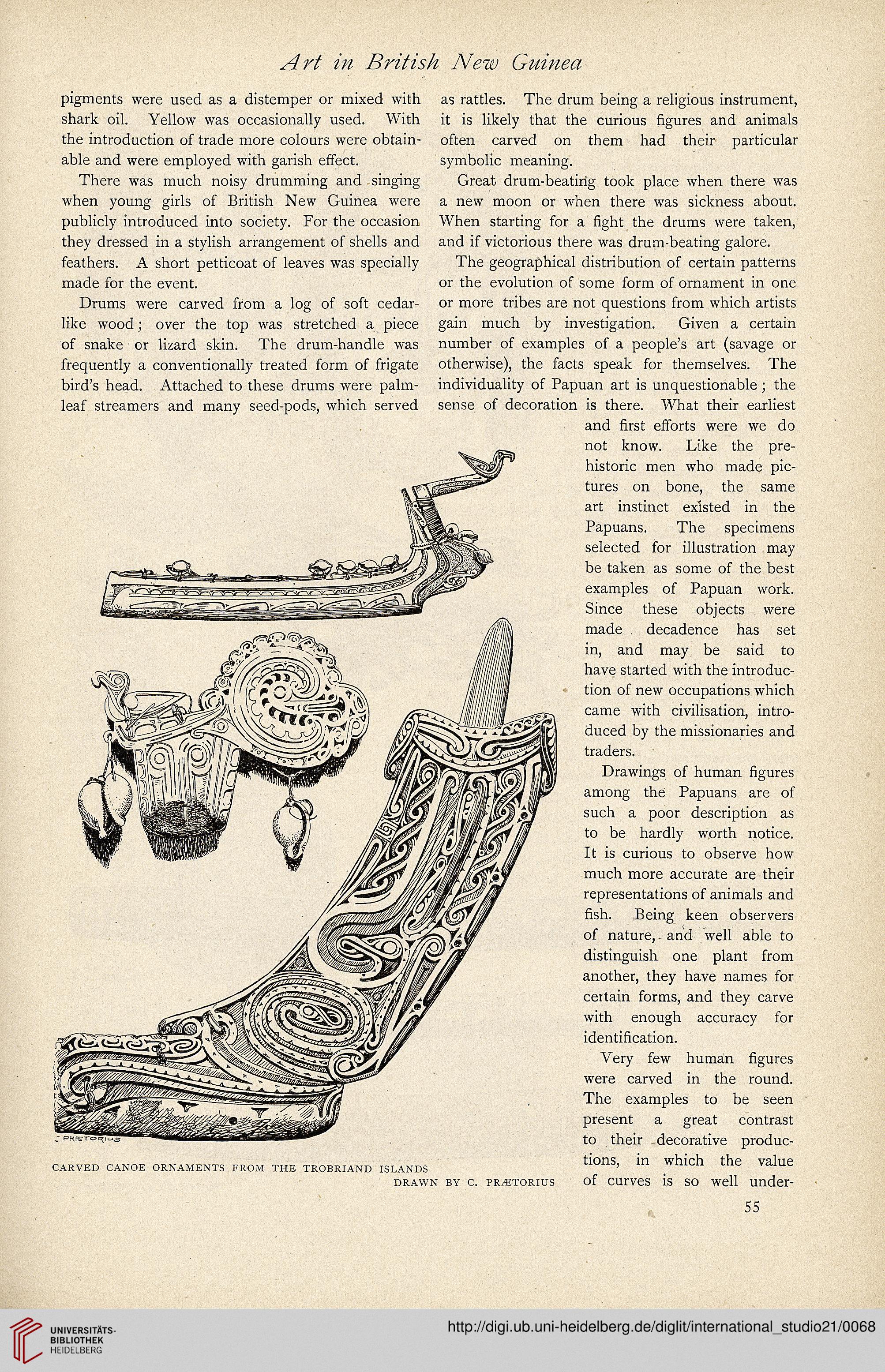pigments were used as a distemper or mixed with
shark oil. Yellow was occasionally used. With.
the introduction of trade more colours were obtain-
able and were employed with garish effect.
There was much noisy drumming and singing
when young girls of British New Guinea were
publicly introduced into society. For the occasion
they dressed in a stylish arrangement of Shells and
feathers. A short petticoat of leaves was specially
made for the event.
Drums were carved from a log of soft cedar-
like wood; over the top was stretched a piece
of snake or lizard skin. The drum-handle was
frequently a conventionally treated form of frigate
bird's head. Attached to these drums were palm-
leaf Streamers and many seed-pods, which served
as rattles. The drum being a religious instrument,
it is likely that the curious ßgures and animals
often carved on them had their particular
symbolic meaning.
Great drum-beatihg took place when there was
a new moon or when there was sickness about.
When starting for a ßght the drums were taken,
and if victorious there was drum-beating galore.
The geographical distribution of certain patterns
or the evolution of some form of Ornament in one
or more tribes are not questions from which artists
gain much by investigation. Given a certain
number of examples of a people's art (savage or
otherwise), the facts speak for themselves. The
individuality of Papuan art is unquestionable ; the
sense of decoration is there. What their earliest
and first efforts were we do
not know. Uke the pre-
historic men who made pic-
tures on bone, the same
art instinct extsted in the
Papuans. The specimens
selected for illustration may
be taken as some of the best
examples of Papuan work.
Since these objects were
made decadence has set
in, and may be said to
have started with the introduc-
tion of new occupations which
came with civilisation, intro-
duced by the missionaries and
traders.
Drawings of human ßgures
among the Papuans are of
such a poor description as
to be hardly worth notice.
It is curious to observe how
much more accurate are their
representations of animals and
ßsh. Being keen observers
of nature, and well able to
distinguish one plant from
another, they have names for
certain forms, and they carve
with enough accuracy for
identißcation.
Very few human ßgures
were carved in the round.
The examples to be seen
present a great contrast
to their decorative produc-
tions, in which the value
of curves is so well under-
CARVED CANOE ORNAMENTS FROM THE TROBRIAND ISLANDS
DRAWN BY C. FR^TORtUS
55




